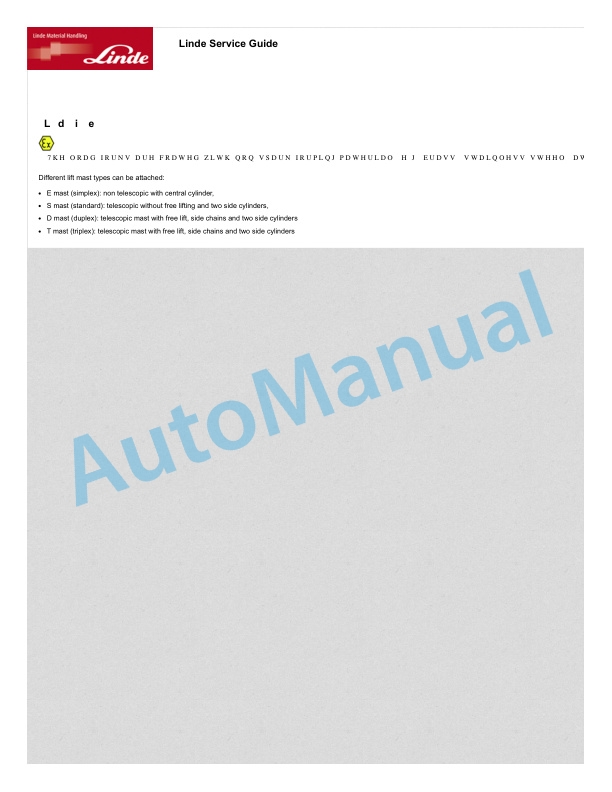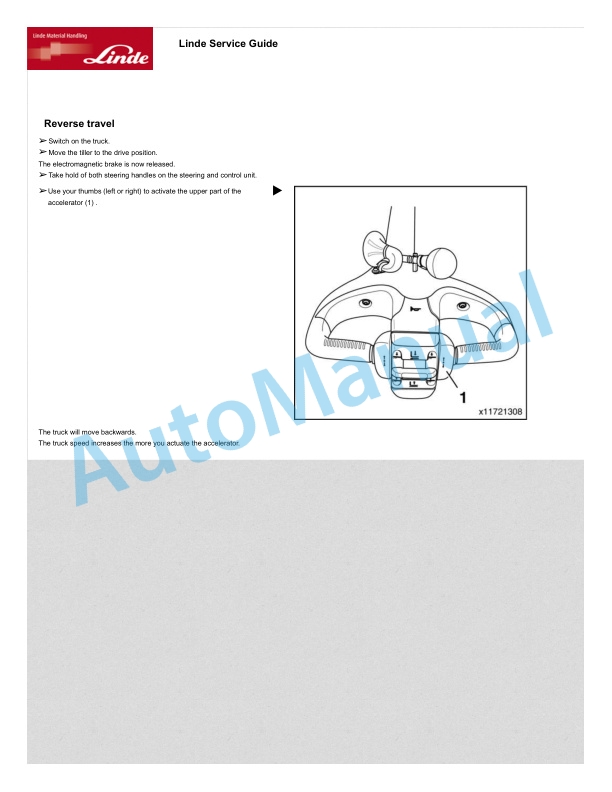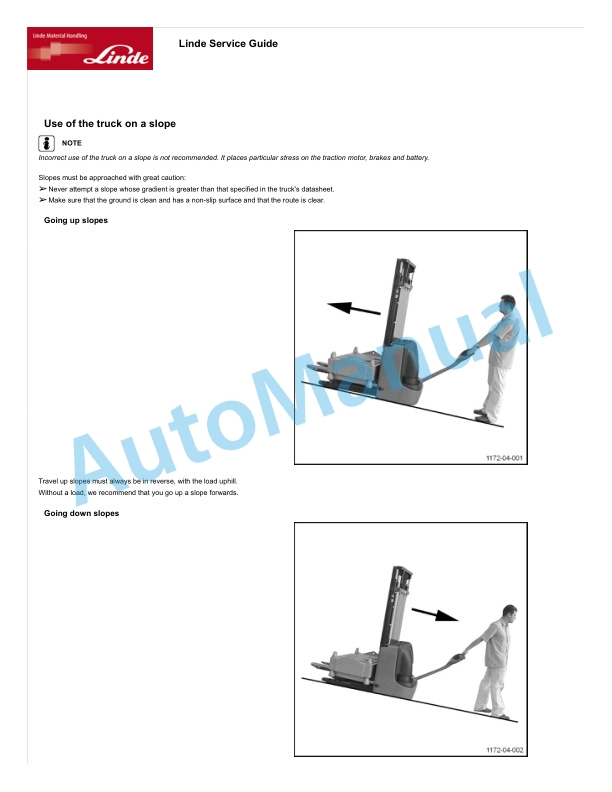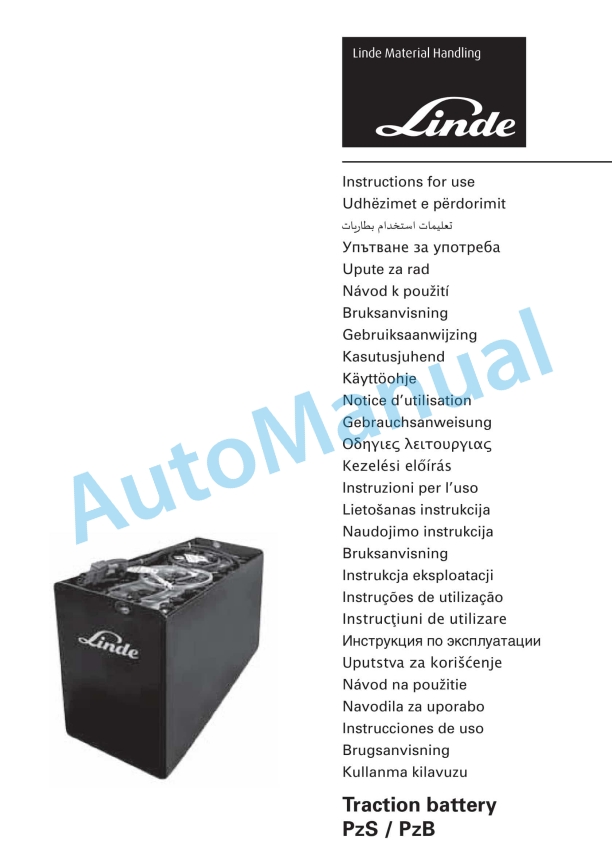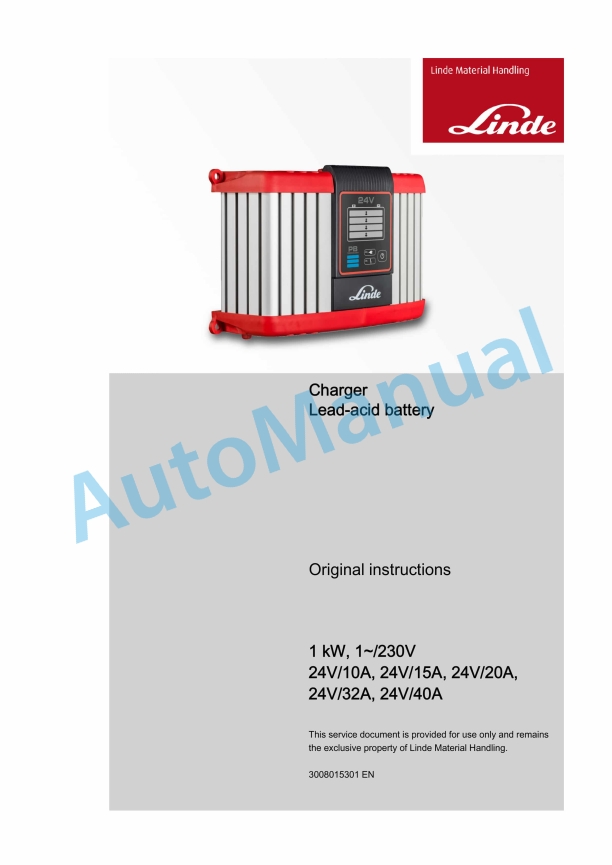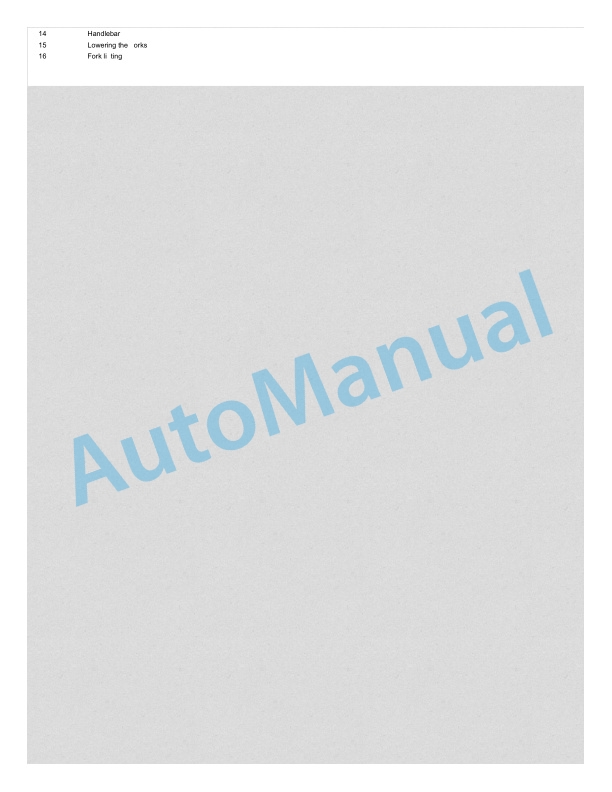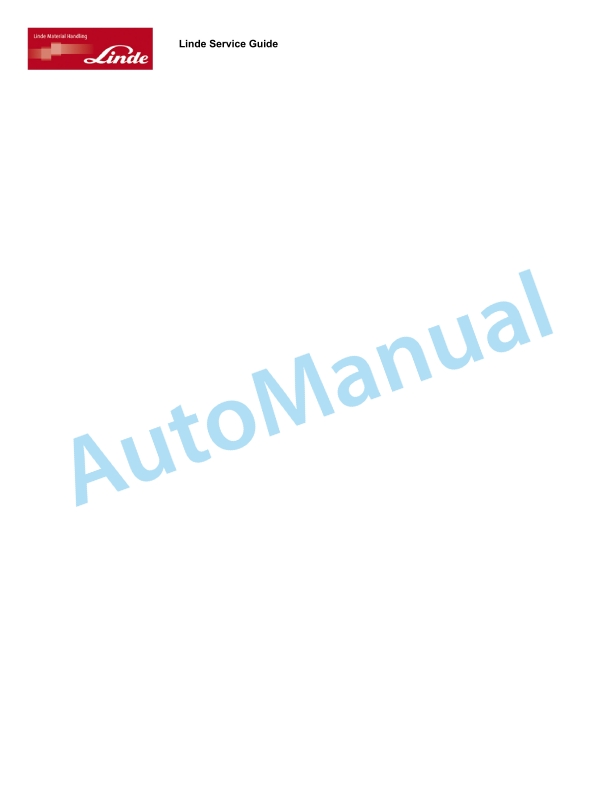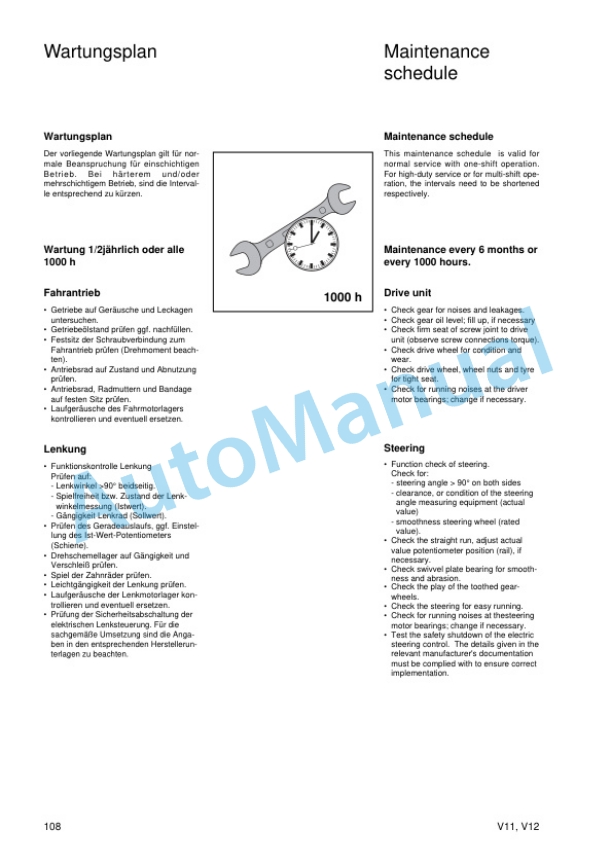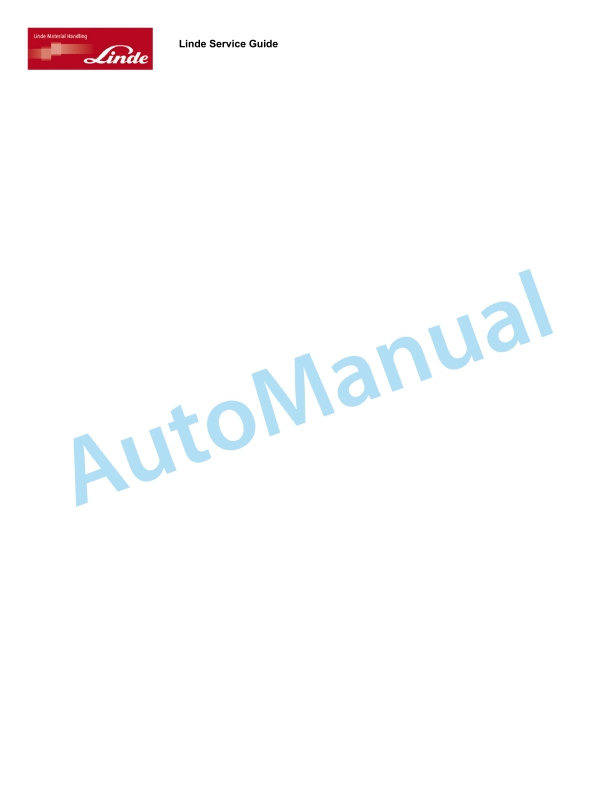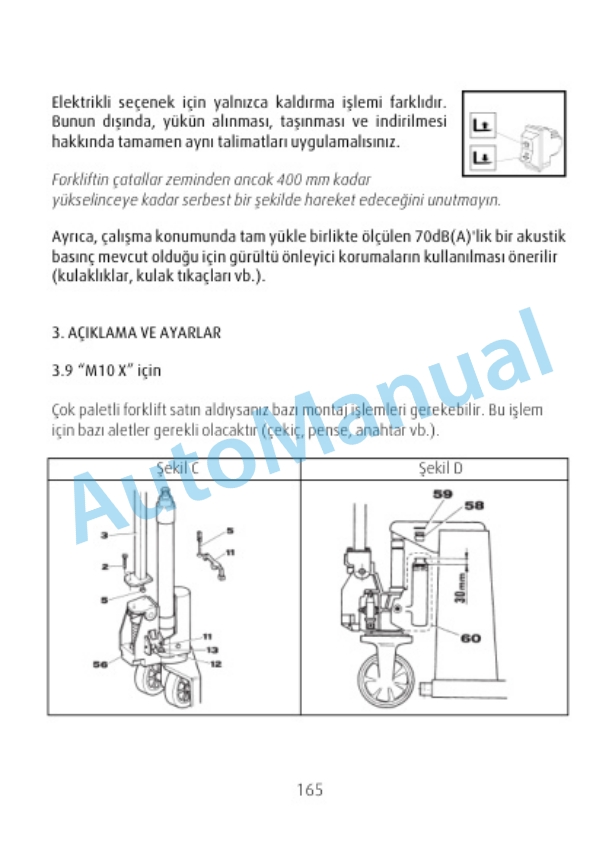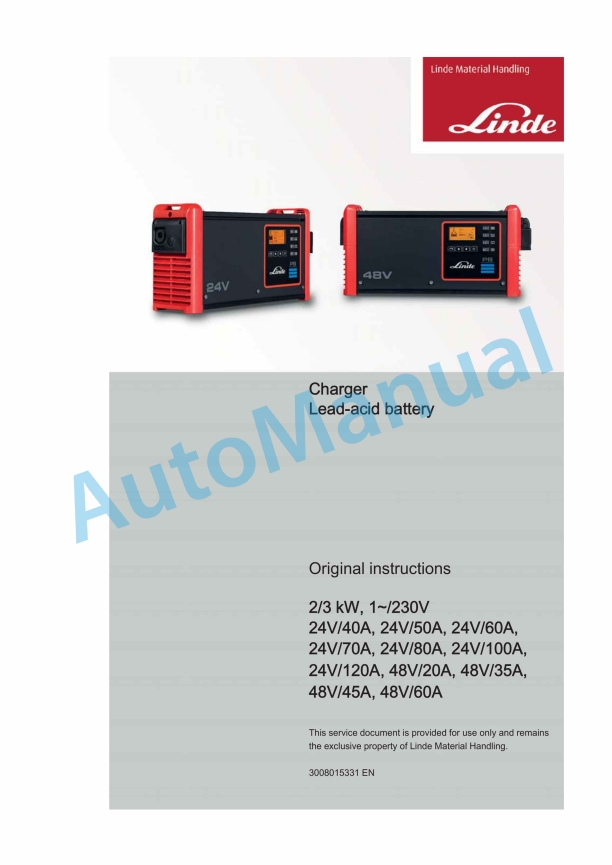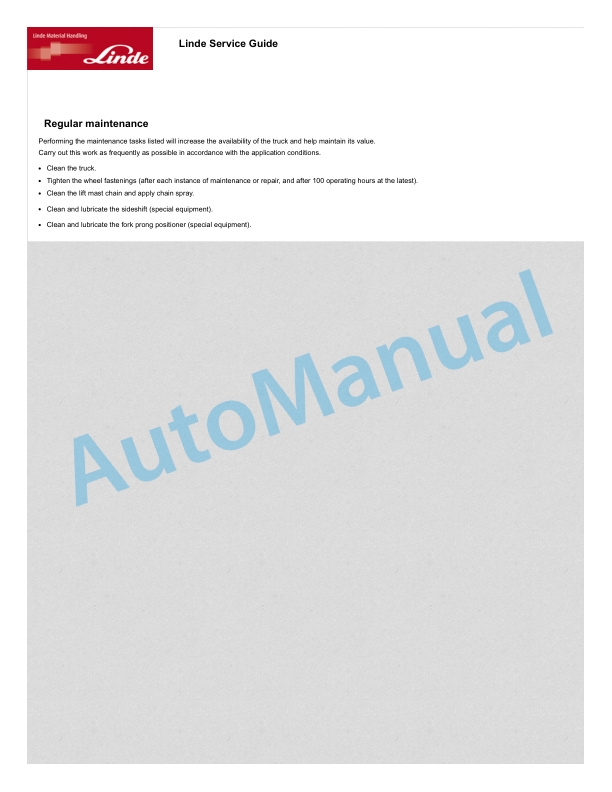Linde 1172-01 – L12 EX, L12 i EX Operating Instructions
$20.00
- Type Of Manual: Operating Instructions
- Format: PDF
- Size: 25.9MB
- Number of Pages: 213
Category: Linde Operator Manual PDF
-
Model List:
- L12 EX
- L12 i EX
- 1. Pallet stackerL12 EX L12i EX
- 1.1. Table of content
- 1.2. Introduction
- 1.2.1. Your industrial truck
- 1.2.2. Intended use
- 1.2.3. Impermissible use
- 1.2.4. Basic information on explosion protection
- 1.2.5. Description of use and climatic conditions
- 1.2.6. Symbols used
- 1.2.7. Drive
- 1.2.8. Steering
- 1.2.9. Hydraulic system
- 1.2.10. Operation
- 1.2.11. Braking system
- 1.2.12. Load lift system
- 1.2.13. Chassis frame
- 1.2.14. Electrical system
- 1.2.15. Temperature monitoring
- 1.2.16. Receiving the industrial truck
- 1.2.17. Legal requirements for marketing
- 1.2.18. Disposing of components and batteries
- 1.3. Safety
- 1.3.1. Explosion protection safety guidelines
- 1.3.2. Residual risks
- 1.3.3. Stability
- 1.3.4. Handling consumables
- 1.3.5. Competent person
- 1.3.6. Regular testing
- 1.4. Overview
- 1.4.1. Labels
- 1.4.2. Nameplate
- 1.4.3. Truck overview
- 1.4.4. Motor compartment
- 1.4.5. Tiller head
- 1.4.6. Charging indicator
- 1.4.7. Digicode option (LFM Go)
- 1.4.8. LFM AccessLFM Basic option
- 1.5. Operation
- 1.5.1. Service plan before initial commissioning
- 1.5.2. Instructions for runningin
- 1.5.3. Preshift checks
- 1.5.4. Switching the industrial truck on and off
- 1.5.5. Driving
- 1.5.6. Forward travel
- 1.5.7. Reverse travel
- 1.5.8. Changing the drive direction
- 1.5.9. Creep speed
- 1.5.10. Proportional Speed function
- 1.5.11. Steering
- 1.5.12. Belly switch
- 1.5.13. Brake system
- 1.5.14. Horn
- 1.5.15. Emergency off switch
- 1.5.16. Working with a load
- 1.5.16.1. Picking up a load
- 1.5.16.2. Driving with load
- 1.5.16.3. Use of the truck on a slope
- 1.5.16.4. Emergency lowering
- 1.5.17. Loading.transporting
- 1.5.17.1. Slinging, lifting
- 1.5.17.2. Transport
- 1.6. Servicing
- 1.6.1. Safety information regarding servicing work
- 1.6.2. Inspection and maintenance data
- 1.6.3. Recommendations for consumables
- 1.6.4. Inspection and maintenance overview
- 1.6.4.1. Maintenance plans
- 1.6.4.2. Additional service plan for explosion protection
- 1.6.5. Preparatory tasks
- 1.6.5.1. Cleaning the industrial truck
- 1.6.5.2. Reading out the error memory
- 1.6.6. Chassis, bodywork and fittings
- 1.6.6.1. Checking and lubricating the bearing points and joints
- 1.6.6.2. Other cleaning and greasing
- 1.6.7. Chassis frame
- 1.6.7.1. Tightening the wheel fastenings
- 1.6.7.2. Checking the wheels for wear and damage
- 1.6.7.3. Adjusting the support rollers
- 1.6.7.4. Checking the brake system
- 1.6.8. Operating devices
- 1.6.8.1. Checking the horn for correct function
- 1.6.9. Electrical enclosure
- 1.6.9.1. Checking the battery charge status
- 1.6.9.2. Charging the battery
- 1.6.9.3. Replacing the battery
- 1.6.9.4. Checking the condition and secure attachment of the electric cables, cable connectors, cable connections andexplosionproof screw joints
- 1.6.10. Hydraulics
- 1.6.10.1. Servicing the hydraulic system
- 1.6.11. Load lift system
- 1.6.11.1. Checking the antispark protection on the fork arms and push rods for wear
- 1.6.12. Troubleshooting
- 1.6.12.1. Checking the Proplan safety unit (PSU)
- 1.6.12.2. Fuse
- 1.6.12.3. Diagnostic connector
- 1.6.12.4. Decommissioning the industrial truck
- 1.6.12.5. Disposal of old trucks
- 1.7. Technical data
- 1.7.1. Technical data
- 1.7.2. Noise emission values
- 2. Pallet stackerL12 EX L12i EX
- 2.1. Table of content
- 2.2. Introduction
- 2.2.1. Your industrial truck
- 2.2.2. Conformity marking
- 2.2.3. Declaration that reflects the content of the declaration of conformity
- 2.2.4. Intended use
- 2.2.5. Impermissible use
- 2.2.6. Basic information on explosion protection
- 2.2.7. Symbols used
- 2.2.8. Taking delivery of the industrial truck
- 2.2.9. Documentation
- 2.2.10. Disposing of gel and lead batteries
- 2.3. Safety
- 2.3.1. Explosion protection safety guidelines
- 2.3.2. Protective equipment for explosion protection
- 2.3.3. Residual risks
- 2.3.4. Stability
- 2.3.5. Competent person
- 2.4. Overview
- 2.4.1. Nameplate
- 2.4.2. Truck overview
- 2.4.3. Display elements
- 2.4.4. Operating devices tiller head
- 2.5. Operating
- 2.5.1. Technical description
- 2.5.2. Drive
- 2.5.3. Steering
- 2.5.4. Hydraulic system
- 2.5.5. Operation
- 2.5.6. Braking system
- 2.5.7. Load lift system
- 2.5.8. Industrial trucks with explosion protection
- 2.5.8.1. Description of use and climatic conditions
- 2.5.8.2. Technical description of explosion protection
- 2.5.8.3. Regular testing
- 2.5.8.4. Batteries for explosion protection
- 2.5.8.5. Wheels and tyres for explosion protection
- 2.5.8.6. Checking the tyres
- 2.5.8.7. Checking the leak resistance
- 2.5.8.8. Handling consumables
- 2.5.8.9. Towing
- 2.5.9. Service plan before initial commissioning
- 2.5.10. Instructions for runningin
- 2.5.11. Preshift checks
- 2.5.11.1. Overview
- 2.5.12. Switching the truck on and off
- 2.5.13. Driving
- 2.5.14. Forward travel
- 2.5.15. Reverse travel
- 2.5.16. Changing the drive direction
- 2.5.17. Steering
- 2.5.18. Belly switch
- 2.5.19. Brake system
- 2.5.20. Horn
- 2.5.21. Emergency off switch
- 2.5.22. Working with a load
- 2.5.22.1. Driving with load
- 2.5.22.2. Handling loads
- 2.5.22.3. Use of the truck on a slope
- 2.5.22.4. Emergency lowering
- 2.5.23. Parking the industrial truck securely
- 2.5.24. Loading.transporting
- 2.5.24.1. Crane loading
- 2.5.24.2. Transport
- 2.6. Service and maintenance
- 2.6.1. Safety information regarding servicing work
- 2.6.2. Inspection and maintenance data
- 2.6.3. Recommendations for consumables
- 2.6.4. Regular maintenance
- 2.6.5. Inspection and maintenance overview
- 2.6.5.1. Maintenance plans
- 2.6.5.2. Additional service plan for explosion protection
- 2.6.6. Preparatory tasks
- 2.6.6.1. Cleaning the industrial truck
- 2.6.6.2. Reading out the error memory
- 2.6.7. Chassis, bodywork and fittings
- 2.6.7.1. Checking the pressuretight housing
- 2.6.7.2. Lifting device
- 2.6.8. Chassis frame
- 2.6.8.1. Tightening the wheel fastenings
- 2.6.8.2. Servicing the wheels and rollers
- 2.6.8.3. Checking the brake system
- 2.6.9. Operating devices
- 2.6.9.1. Checking that the horn is working correctly
- 2.6.10. Electrics.electronics
- 2.6.10.1. Checking the battery charge status
- 2.6.10.2. Connecting the battery to an external battery charger
- 2.6.10.3. Battery replacement
- 2.6.10.4. Checking the condition and secure attachment of the electric cables, cable connectors, cable connections andexplosionproof screw joints
- 2.6.11. Hydraulics
- 2.6.11.1. Servicing the hydraulic system
- 2.6.12. Load lift system
- 2.6.12.1. Checking the antispark protection on the fork arms for wear
- 2.6.12.2. Servicing the lift mast
- 2.6.13. Troubleshooting
- 2.6.13.1. Fuses
- 2.6.13.2. Diagnostic connector
- 2.6.13.3. Decommissioning the industrial truck
- 2.6.13.4. Disposal of old trucks
- 2.6.13.5. Malfunctions during operation
- 2.7. Technical data
- 2.7.1. Technical data
- 2.7.2. Ecodesign requirements for electric motors and variable speed drives
- 2.7.3. Noise emission values
Rate this product
You may also like
Linde Operator Manual PDF
Linde 1110-01 – V08-01, V08-02 Operating Instructions SN 11.09 and up SN up to W41110V00528
$20.00
Linde Operator Manual PDF
Linde 1110-01 – N20C, N20VI, N20VLI, V08-01, V08-02 Operating Instructions SN W41110V00529 and up
$20.00
Linde Operator Manual PDF
$20.00



